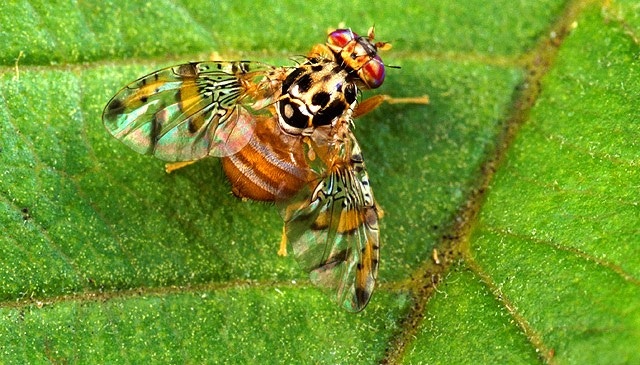November 23, 2021

Portions of San Bernardino and Los Angeles counties have been placed under quarantine for the Mediterranean fruit fly following the detection of two wild flies in and around the city of Upland, Calif.
The USDA, CDFA, and the San Bernardino and Los Angeles County agricultural commissioners are working collaboratively on this project.
The quarantine area measures approximately 95 square miles, bordered on the north by Mount Baldy; on the south by Pomona; on the west by La Verne; and on the east by Chaffey College. A link to the quarantine map may be found here.
Sterile male Medflies are scheduled to be released in the area as part of an eradication effort. The release rate will be 250,000 males per square mile per week in a 13.28 square mile area around the infestation.
In addition, properties within 200 meters of detections are being treated with an organic formulation of Spinosad in order to remove any mated female Medflies and reduce the density of the population. Finally, fruit removal will occur within 100 meters of properties with larval detections and/or multiple-adult detections.
The sterile fly release program has a proven track record of success in California. Sterile male flies mate with fertile female flies in the natural environment, but produce no offspring. The fly population decreases as the wild flies reach the end of their natural life span with no offspring to replace them, ultimately resulting in eradication of the pest.
Sterile male Medflies are provided by the joint CDFA/USDA sterile insect rearing facility in Los Alamitos, which prepares sterile flies for release everyday over the Los Angeles basin. CDFA has successfully eradicated each and every detected Medfly infestation in California history, dating back more than 45 years.
Quarantine will affect growers
The quarantine will affect any growers, wholesalers, and retailers of susceptible fruit in the area as well as local residents. Home gardeners are urged to consume homegrown produce on site and not move it from their property. However, residents living in the quarantine area may consume or process (i.e. juice, cook, or grind in a food processor) fruit on the premises where picked, or dispose of it by double-bagging it and placing it in regular trash bins (not green waste) or grinding it in a garbage disposal. These actions protect against the artificial spread of the infestation to nearby regions where Medflies could affect California’s food supply and backyard gardens.
The Medfly is known to target more than 250 types of fruits and vegetables. Damage occurs when the female lays eggs inside the fruit. The eggs hatch into maggots and tunnel through the flesh of the fruit, making it unfit for consumption. Residents who believe their fruits or vegetables are infested with fruit fly larvae are encouraged to call the State’s toll-free Pest Hotline at 1-800-491-1899.
While fruit flies and other invasive species that threaten California’s crops and natural environment are sometimes detected in agricultural areas, the vast majority are found in urban and suburban communities.
The most common pathway for these invasive species to enter our state is by “hitchhiking” in fruits and vegetables brought back illegally by travelers as they return from infested regions of the world.
To help protect California’s agriculture and natural resources, CDFA urges travelers to follow the Don’t Pack a Pest program guidelines (www.dontpackapest.com).
Source: California Department of Food and Agriculture, which is solely responsible for the information provided and is wholly owned by the source. Informa Business Media and all its subsidiaries are not responsible for any of the content contained in this information asset.
You May Also Like




